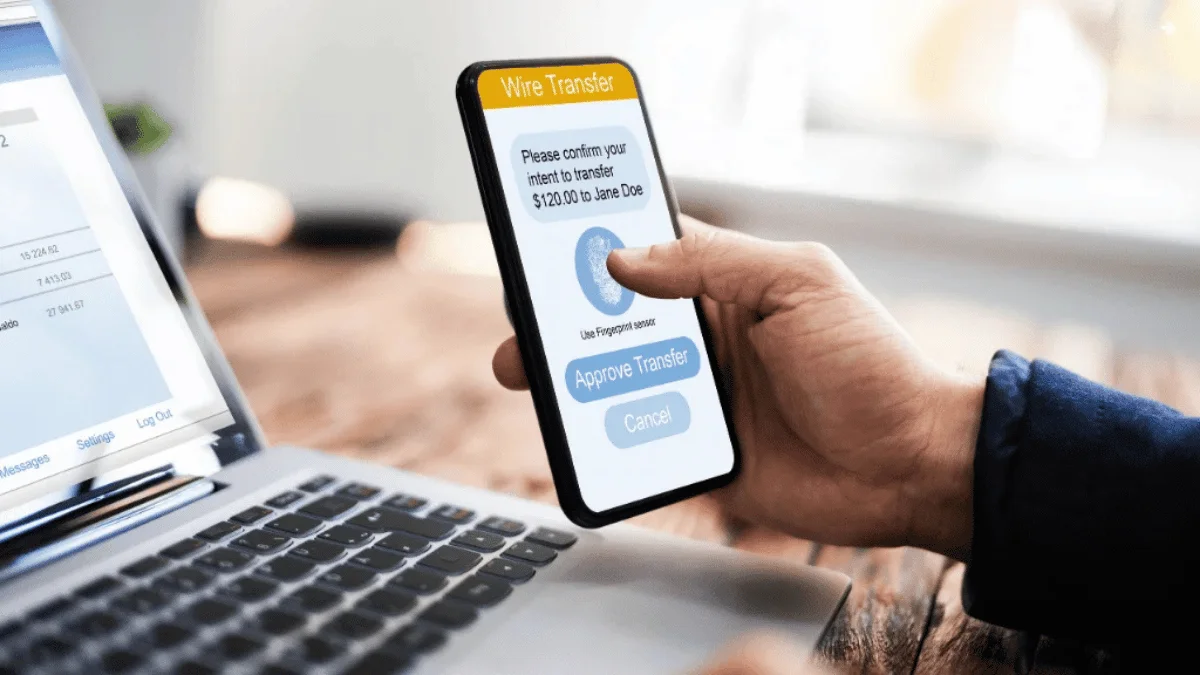Mastering Amazon Vendor Central can greatly impact your bottom line, but it requires a strategic approach. I've found that optimizing product listings with the right keywords and compelling descriptions is essential for visibility.
Leveraging Amazon's advertising tools can drive targeted traffic to your products. However, understanding how to navigate the platform effectively is just the beginning. There are other key factors to keep in mind that can further enhance your profitability.
Key Takeaways
- Optimize product listings with keyword-rich titles and clear descriptions to enhance visibility and attract customers.
- Utilize Amazon Marketing Services and promotional tools to boost sales and drive traffic to your products.
- Monitor competitors regularly to adjust pricing and inventory, ensuring competitiveness in the marketplace.
- Leverage analytics for data-driven decisions, refining pricing and product strategies based on market demand.
- Maintain open communication with retail buyers, sharing insights and updates to foster strong business relationships.
What is Amazon Vendor Central and How Does It Work?

When you're looking to expand your brand's reach, understanding Amazon Vendor Central is essential. As a first-party seller, you sell your products directly to Amazon, which then sells them to customers.
This model gives you access to various fulfillment services, enhancing your product visibility on the platform. The central dashboard provides valuable insights, allowing you to track performance metrics and manage inventory effectively.
One of the key advantages is the pricing control you have; you can set retail prices that align with your brand strategy while benefiting from Amazon's vast customer base.
Through mastering Vendor Central, you can optimize your marketing efforts and guarantee your products reach the right audience, ultimately driving sales growth.
The Difference Between Amazon Seller Central and Vendor Central

While both Amazon Seller Central and Vendor Central provide unique pathways for selling on the platform, they cater to different business models and strategic goals. In Seller Central, I act as a third-party seller, maintaining control over pricing and inventory.
This model allows me to set my own pricing strategy and manage product availability directly, which can be advantageous for competitive pricing. Conversely, Vendor Central transforms me into a supplier, selling directly to Amazon.
In this scenario, I lose some control over pricing and inventory but benefit from Amazon's vast distribution network. Understanding these differences is essential for aligning my business model with the right approach to maximize my profits on Amazon's platform.
How to Get Invited to Amazon Vendor Central?

Expanding my selling strategy to include Amazon Vendor Central can greatly enhance my market reach, but getting invited to this program requires a strategic approach. To improve my chances during the invitation process, I focus on:
- Product Selection: Offering high-demand consumer brands that resonate with the Amazon marketplace.
- Retail Pricing: Setting competitive pricing that aligns with Amazon's standards and attracts attention.
- Brand Performance: Demonstrating strong sales and positive reviews to showcase my brand's credibility.
Key Features and Benefits of Using Amazon Vendor Central

Understanding the key features and benefits of Amazon Vendor Central is essential for any seller looking to maximize their potential on the platform. It offers unique advantages that can greatly enhance your business operations.
Here's a summary of some key features and benefits:
| Key Features | Benefits | Examples |
|---|---|---|
| Product Pricing | Competitive Edge | Better control over pricing |
| Customer Service | Enhanced Customer Loyalty | Direct support from Amazon |
| Fulfillment Options | Streamlined Shipping | Amazon's logistics network |
| Advertising Opportunities | Increased Visibility | Targeted marketing campaigns |
How to Set Up Your Amazon Vendor Central Account for Success?

Setting up your Amazon Vendor Central account effectively is essential for achieving long-term success on the platform. Here are key steps I recommend:
- Optimize product listings: Guarantee your product descriptions are clear, engaging, and keyword-rich.
- Streamline fulfillment processes: Choose the right fulfillment method to guarantee timely deliveries and enhance customer satisfaction.
- Explore advertising options: Utilize Amazon's advertising strategies to boost visibility and drive sales.
Understanding Amazon Vendor Central's Purchase Orders and Invoices

Maneuvering Amazon Vendor Central's purchase orders and invoices can feel overwhelming, but mastering this aspect is essential for maintaining a smooth supply chain. Understanding the relationship between purchase orders, invoices, and your fulfillment strategy is vital. Here's a quick breakdown:
| Purchase Order | Shipping Costs | Payment Terms |
|---|---|---|
| PO Number | Cost per unit | Net 30 days |
| Quantity | Total shipping | Net 60 days |
| Product Prices | Handling fees | Prepaid terms |
| Order Date | Freight charges | Pay upon invoice |
| Status | Delivery fees | Discount terms |
How to Manage Inventory Effectively on Amazon Vendor Central?
Managing inventory effectively on Amazon Vendor Central is essential for optimizing your supply chain and ensuring customer satisfaction. I've learned that monitoring inventory levels is key to maintaining healthy stock without overcommitting resources. Here are some strategies I use:
- Utilize fulfillment centers to streamline logistics and reduce product costs.
- Analyze product turnover to adjust stock levels based on demand trends.
- Leverage price control to stay competitive and manage margins within the central program.
5 Strategies for Maximizing Profit on Amazon Vendor Central
Maximizing profit on Amazon Vendor Central requires a multifaceted approach, and I've found several strategies that can make a significant impact.
Through optimizing product listings, utilizing promotional tools, and effectively managing pricing, I've been able to enhance visibility and sales. Furthermore, leveraging analytics and streamlining inventory management helps me make informed decisions that drive profitability.
1. Optimize Product Listings
Although I understand that many sellers focus on pricing and advertising, optimizing product listings is equally essential for driving sales and enhancing profitability on Amazon Vendor Central. To truly stand out, I recommend paying attention to:
- Product Titles: Make them clear and keyword-rich to improve searchability.
- Detailed Product Descriptions: Use these to convey features, benefits, and applications, which builds customer trust.
- Accurate Product Images: High-quality visuals can greatly impact conversion rates.
2. Use Promotional Tools
While many vendors underestimate the power of promotional tools on Amazon Vendor Central, I've found that leveraging these strategies can greatly boost sales and profitability. Through effectively utilizing promotional programs and Amazon Marketing Services, I've seen significant improvements in product sales.
Implementing targeted advertising campaigns allows me to reach specific customer segments, enhancing customer interactions and engagement. Furthermore, integrating various advertising solutions helps me analyze performance and optimize marketing tools based on data-driven insights.
I focus on creating compelling promotions that resonate with my audience, driving higher conversion rates. Overall, these promotional tools are essential for maximizing profits on Amazon Vendor Central and establishing a competitive edge in the marketplace.
3. Streamline Inventory Management
How can I effectively streamline my inventory management on Amazon Vendor Central to enhance profitability? To optimize my logistics and control inventory levels, I focus on key strategies that align with the platform's capabilities. Here are three essential tactics I've found useful:
- Utilize Fulfillment Methods Wisely: Choose between Amazon's fulfillment services and your own to manage costs effectively.
- Centralize Data Across Platforms: Leverage both Amazon Seller Central and Vendor Central to maintain accurate stock levels and improve decision-making.
- Monitor Active Sellers: Keep an eye on competitors to adjust inventory accordingly and stay competitive.
4. Manage Pricing Effectively
Effective inventory management naturally leads to the next vital element of success on Amazon Vendor Central: pricing strategy. To manage pricing effectively, I've learned that understanding the difference between vendor central and seller central is fundamental.
In vendor central, I can set competitive wholesale prices that align with my overall business strategies. I also analyze pricing for products in relation to the traditional sales process and market demand.
This gives me a distinct advantage for sellers. Through strategically adjusting my pricing, I can not only increase sales volume but also maximize profit margins.
Always keep in mind that a well-planned pricing strategy can greatly impact your bottom line, so it's important to evaluate and adapt continuously.
5. Take Advantage of Analytics and Reporting
Harnessing the power of analytics and reporting is essential for maximizing profit on Amazon Vendor Central. Through diving into these data resources, I can make informed decisions that elevate my business strategy. Here are three key areas to focus on:
- Sales Performance: Analyze product sales channels to identify top performers and underachievers.
- Advertising Effectiveness: Use analytics to measure the ROI of your advertising campaigns and adjust strategies accordingly.
- Marketing Trends: Stay ahead of the curve by tracking emerging marketing trends that could impact customer preferences.
Moreover, effective reporting helps streamline customer service responsibilities, ensuring I'm responsive to buyer needs. Through leveraging these insights, I can optimize product offerings and ultimately drive profitability on Amazon.
How to Handle Amazon Vendor Central Terms and Conditions?
Steering through the intricacies of Amazon Vendor Central's terms and conditions can feel overwhelming at times, but understanding them is vital for a successful partnership.
I've found that familiarizing myself with vendor terms not only streamlines the selling process but also enhances my business relationships.
It's critical to know how these terms outline responsibilities, especially regarding advertising fees and payment schedules. Unlike Seller Central, Vendor Central places more emphasis on these agreements, so I always read the fine print.
Through staying informed about the terms and conditions, I can better navigate challenges and capitalize on opportunities. Ultimately, a solid grasp of these guidelines helps me maintain a competitive edge in my Amazon Vendor Central journey.
How Amazon Vendor Central's Pricing and Discount Structures Work?
Understanding how Amazon Vendor Central's pricing and discount structures work is essential for maximizing profitability and ensuring competitiveness in the marketplace. As a seller, I've found that carefully managing these elements can greatly impact my success. Here are key points to reflect on:
- Pricing Strategy: Set competitive prices that attract customers while maintaining margins.
- Discounts: Implement strategic discounts to boost sales during peak seasons or to clear inventory.
- Advertising: Leverage Amazon's advertising tools to enhance visibility and drive traffic to your listings.
How to Build Strong Relationships with Amazon Retail Buyers?
Building strong relationships with Amazon retail buyers can greatly influence the success of your Vendor Central experience. To foster these relationships, I focus on open communication through email, sharing marketing insights that align with their goals.
Understanding their needs helps me tailor my approach, guaranteeing I address any concerns about customer reviews or product performance. I also keep an eye on trends in Amazon Seller Central, allowing me to anticipate potential customers' preferences.
Regularly updating buyers on my business's developments guarantees they feel valued.
This proactive approach not only strengthens our partnership but also positions my products favorably in the marketplace. Ultimately, nurturing these relationships can lead to increased sales and long-term success on Amazon.
How Mohit Ecommerce Can Help You Master Amazon Vendor Central for Big Profits?
While maneuvering through the complexities of Amazon Vendor Central can seem intimidating, partnering with Mohit Ecommerce can streamline the process and reveal significant profit potential. Here's how we can help:
- Complete Control: We provide strategies that empower you to take charge of your vendor central account.
- Cost Management: Through optimizing marketing costs, we guarantee your investment in advertising tools yields maximum returns.
- Direct Fulfillment: Our expertise in direct fulfillment allows you to tap into Amazon's vast customer base effectively.
Together, we can navigate the intricacies of vendor central, leveraging Amazon advertising to enhance your visibility and drive sales. Let's work together to turn your Amazon venture into a thriving business!
How to Use Amazon Vendor Central's Marketing and Advertising Tools?
Steering through the marketing and advertising tools within Amazon Vendor Central can be a game-changer for your business. Utilizing the Amazon Advertising Console allows me to effectively manage campaigns, maximizing visibility.
I've found that Amazon Sponsored Products are essential for driving traffic, while Amazon Sponsored Brands help boost brand awareness. Through strategically leveraging these marketing opportunities, I gain a higher level of control over my advertising spend and performance metrics.
Shifting from Vendor Central to Seller Central can enhance my marketing efforts further, as it provides additional tools and insights.
Always make sure you have adequate customer service in place to handle inquiries generated from your ads. Embracing these tools can lead to substantial profits and a more robust brand presence on Amazon.
The Role of Amazon's Retail Analytics in Maximizing Sales
Understanding Amazon's Retail Analytics is essential for anyone looking to maximize sales on the platform. As a retailer, I've learned that leveraging these analytics can transform my Amazon business. Here are three key areas to focus on:
- Advertising Effectiveness: Track ROI on campaigns for better ad spend.
- Inventory Management: Analyze sales data to optimize stock levels.
- Organic Search Insights: Use keyword data to enhance product visibility.
How to Monitor and Optimize Your Performance on Amazon Vendor Central?
Monitoring and optimizing performance on Amazon Vendor Central is vital for sustained success in a competitive marketplace. I regularly track key metrics through Seller Central to understand how my products are performing within their respective categories. Through analyzing sales data, I can identify trends and pinpoint areas that need improvement.
I also look for additional marketing opportunities, such as sponsored ads or promotions, to boost visibility and enhance the buyer experience. It's important to adjust strategies based on feedback and performance analytics.
Furthermore, I keep an eye on competitors to guarantee my offerings remain attractive. Through continuously monitoring and optimizing these aspects, I maximize my potential for profitability while making sure I meet customer expectations.
How to Stay Compliant with Amazon Vendor Central Policies?
While managing the complexities of Amazon Vendor Central, staying compliant with its policies is essential for maintaining a successful partnership. I've found that understanding compliance not only protects your business but also enhances your relationship with customers. Here are a few key areas to focus on:
- Monitor unauthorized listings regularly to prevent potential penalties.
- Utilize the Seller Central dashboard for tracking compliance status and updates.
- Familiarize yourself with the program's essential features and guidelines.
Tips for Scaling Your Business Using Amazon Vendor Central
To effectively scale your business on Amazon Vendor Central, it's crucial to leverage data-driven insights and refine your strategies continuously.
I've found that understanding the platform's metrics helps experienced sellers like me identify which products resonate with online retailers. Through analyzing sales trends, I can adjust prices for products to stay competitive while maximizing profit margins.
Optimizing the shipping products process guarantees faster delivery times, enhancing customer satisfaction. I recommend leveraging Amazon Marketing Services to boost visibility, targeting key demographics effectively.
Don't overlook the importance of A/B testing your marketing strategies to see what resonates best. With continual refinement of these elements, businesses can see significant growth and profitability on Amazon Vendor Central.



